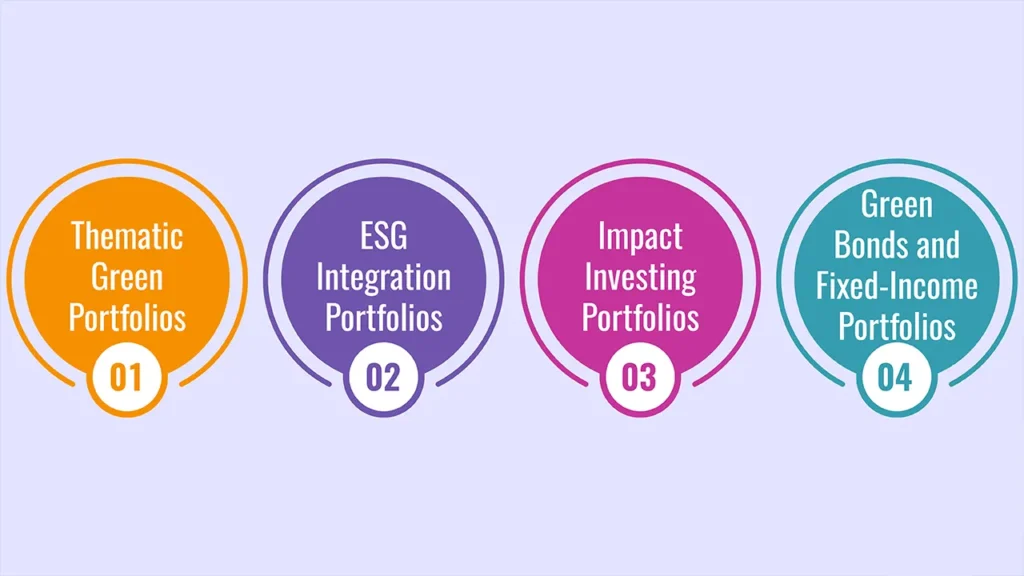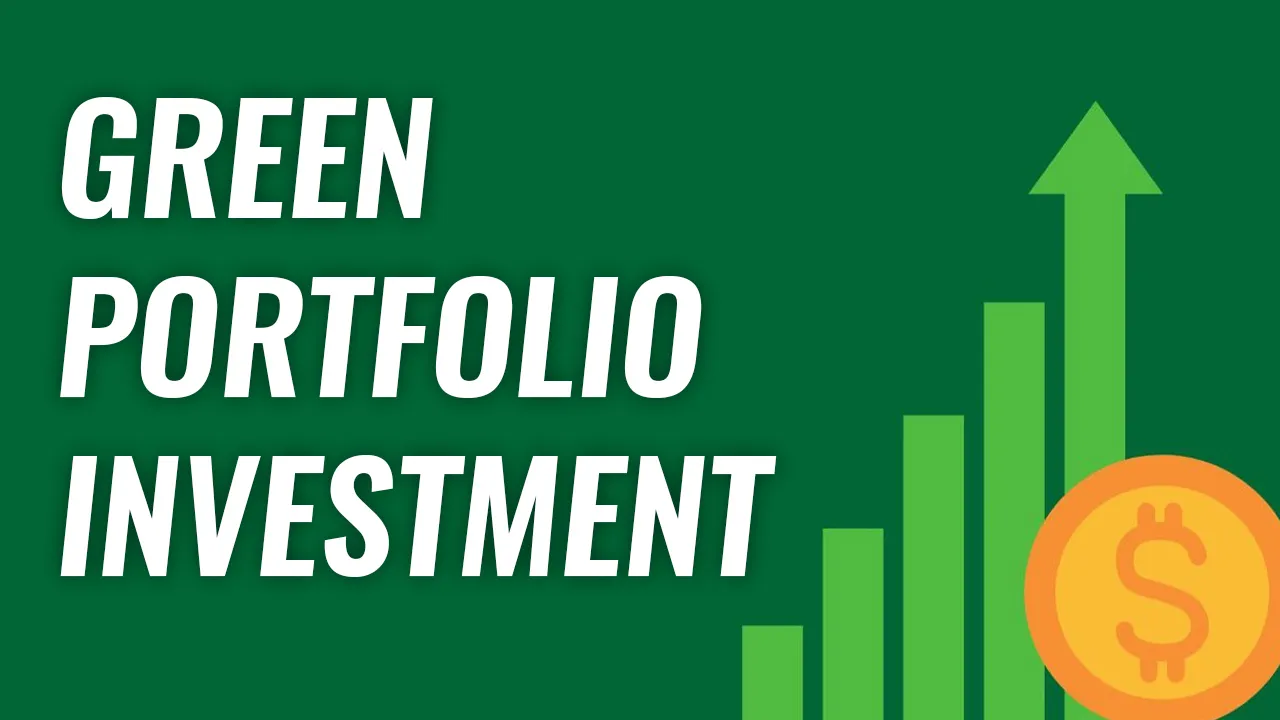What is a green portfolio? Types & Investment Strategies is a critical book for today’s investor who is looking to financially level the playing field in a manner that is beneficial to their business and the planet.
Green portfolio: Most ideally, the green portfolio is one in which the investment is toward environmental efforts and/or socially responsible organizations, in which environmental conservation, renewable energy, and sustainability are the major criteria for investments.
And with climate anxiety and regulatory pressure rising around the world, green portfolios are drawing interest from investors who want to balance financial returns with doing good for the environment. It provides a readable definition of just what the concept means, types of green portfolios and some ideas about good investment ideas for such a portfolio to help readers create a good, sustainable investment plan.
What is a Green Portfolio?
A green portfolio is nothing more than a portfolio of stocks, bonds, mutual funds, ETFs or other securities that are chosen consciously for their positive impact on the environment. It can be renewable energy, clean technology, anti-pollution, wildlife-friendly and sustainable use of the environment, etc.
Green investing, unlike traditional investing, aims to be more than good for the bottom line; it aims to be good for the environment. Investors use green portfolios to push for a low-carbon economy, to reduce their exposure to companies with poor environmental performance and to invest in the disruptive technological characteristics of the future.
But you’ll need to do thoughtful due diligence, because not all investments marketed as “green” adhere to strict sustainability guidelines.
Types of Green Portfolios

1. Thematic Green Portfolios
Theme-based green portfolios emphasize on particular environmental issues, like renewable energy, electric cars, water conservation and sustainable agriculture. These funds are designed to invest in firms and projects that fit a specific green theme, giving investors targeted exposure to sectors likely to benefit from environmental demand.
2. ESG Integration Portfolios
Environmental integration profiles (so-called ESG criteria, Environmental, Social and Governance) are profiles in which environmental factors are included in the overall investment analysis and investment decision.
In this guide, multiple industries and companies are ranked for ESG performance, and those deemed to not meet minimum environmental standards are screened out or down-weighted.
3. Impact Investing Portfolios
Impact investing portfolios seek to deliver measurable environmental benefits as well as financial returns. These portfolios often consist of private equity, venture capital or debt investments in companies or projects that produce measurable social and environmental benefits in areas like clean energy infrastructure or carbon capture.
4. Green Bonds and Fixed-Income Portfolios
Some investors favour fixed-income products like green bonds that allocate capital to environmentally friendly projects. Green bonds finance renewable energy facilities, energy-efficient buildings, pollution control and other projects. These bonds can be a good way for investors looking for steady income with a green influence.
Green Portfolio Investment Strategies
Multiple investment strategies are used in order to construct a good green portfolio, where risks, returns and sustainability objectives are compromised.
Diversification Across Assets
Reducing risk and enhancing the potential for return by spreading investments across stocks, bonds, mutual funds, and ETFs. It also permits some exposure to different types of green investing — from growth in clean tech equities to an income stream from green bonds.
| Asset Class | Description | Role in Green Portfolio |
|---|---|---|
| Green Equities | Stocks of companies committed to eco-friendly practices, e.g., renewable energy firms | Provide growth potential and capital appreciation |
| Green Bonds | Fixed-income securities funding environmental projects | Offer income and lower volatility |
| Green Mutual Funds & ETFs | Pooled funds focused on green companies or strategies | Facilitate diversified exposure to green investments |
| Private Equity/Impact Investments | Investments directly supporting green startups or projects | Provide high-impact opportunities with potential for high returns |
Active vs. Passive Management
There are those investors who prefer actively managed green funds, wherein experts choose individual securities according to strict sustainability parameters. Others employ a passive strategy that includes investing in green index funds or ETFs that follow sustainable market indexes at less cost and with more diversity across the market.
Focus on Long-Term Growth
Transitioning to a green economy is a long-term trend. Positive investment models are those that have patient capital and a long-term horizon, thereby enabling companies working on sustainable solutions to scale and survive those early headwinds.
Regular Monitoring and Rebalancing
Because the green market changes quickly, with technology and policy overhauls, investors will need to be vigilant and reweigh their holdings as needed, he said. This guarantees for compliance with objectives, risk-taking capacity and current regulations.
Benefits of a Green Portfolio
- Positive Environmental Impact: When they invest in green companies and projects, investors are helping to fight climate change and protect natural resources.
- Possible Competitive Returns: Green portfolios have been found to be able to potentially match or surpass the conventional option, on account of the rapid advancements being made in renewable energy & sustainability industries.
- Risk Reduction: Avoiding firms with sub-par environmental track records means mitigating potential heightened fines, reputational damage and stranded asset risks.
- Values-based investing: Investors seek to invest in accordance with their personal or institutional ethical beliefs in sustainability.
Common Challenges
- The Greenwashing Risk: Some companies or funds misrepresent their environmentally friendly nature. Investors would be wise to do their own research – including relying on third-party ESG ratings or certifications.
- Volatility: New green industries can suffer from price volatility because of technology cycles or policy changes.
- Data and Transparency: Measuring the impact on the environment is both complex and evolving, so there is no method to consistently report on the metrics for comparison.
Effective Green Portfolio Building Tips
- Set objectives on the environment in line with the financial goals.
- companies’ due diligence on companies’ or funds’ environmental records.
- Rely on third-party ESG ratings and certifications as a road map.
- Spread out across multiple green sectors and asset classes.
- Track worldwide environmental regulations that impact investments.
- Think about tax incentives for investments that are green, such as green bonds.
- Be patient, and keep in mind that these trends are not short-term.
Final Words
What is a green portfolio and why? Types & Investment Strategies is much more than an investment guide—it’s a new way of investing that combines traditional strategies and intellectual concepts with frank commentary on the environment. Building a green portfolio requires understanding different types of green investments and applying financial management strategies to manage risk, return, and impact.
Green investing not only contributes to the much-needed shift towards a sustainable planet, but it can also provide financial returns. Whether you invest in thematic funds, green bonds, or stocks that have ESG integration, the magic formula is a rigorous, research-driven approach that adapts to market and environmental evolution. It’s a powerful way to align your wealth with your values, to reorient your financial resources toward a healthier planet today and for future generations.
Frequently Asked Questions (FAQs)
1. What is a green portfolio?
A green portfolio is a portfolio of securities or companies whose management is committed to the cause of protecting the environment. Some products of such companies set it apart because they benefit the environment, such as solar energy, waste disposal and rare metals.
2. What are some popular ‘green’ portfolios?
Common examples include thematically-based green portfolios that are focused on specific environmental sectors, as well as ESG integration portfolios that consider environmental scores broadly, impact investing portfolios that target measurable results, and fixed-income greenbond portfolios.
3. In what ways do investment tactics in green portfolios vary?
Investment strategies range from active management, where experts pick individual green assets, to passive management, which follows green indexes.
1) Diversification.
2) A Long Time Horizon.
3) Regular Checkups Firm Strategy
4. Are green portfolios financially rewarding?
Most analyses reveal that competitive returns are possible with many green portfolios as sustainable technologies and clean energy flourish in partnership with global vibrancy and innovation.
5. How Do I Avoid Greenwashing in Green Investments?
To avoid greenwashing, research investments thoroughly, use independent ESG ratings, check certifications, and stay informed about the environmental standards companies adhere to.

Leave a Reply